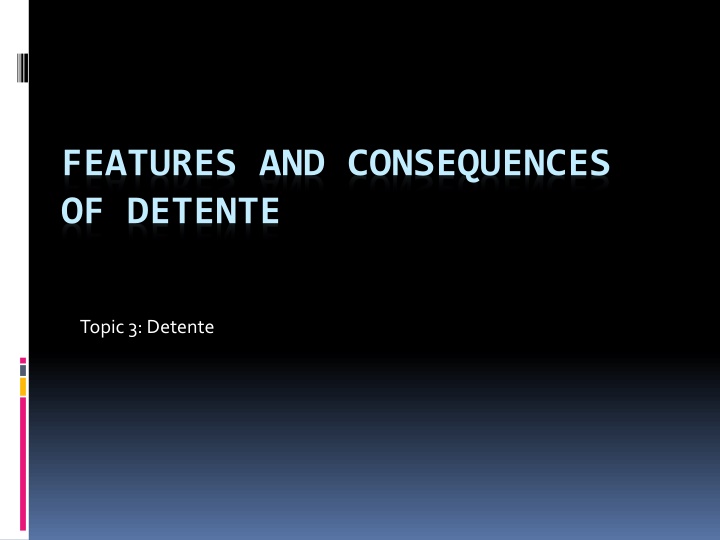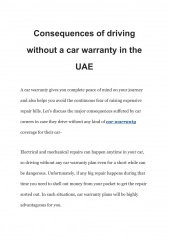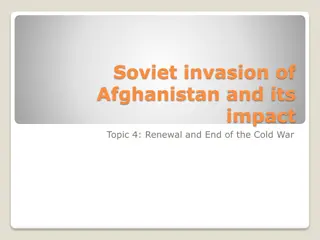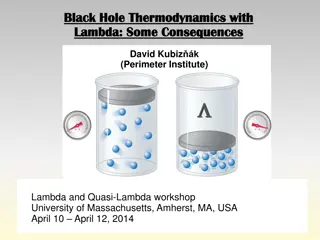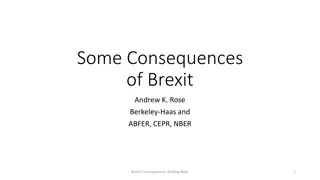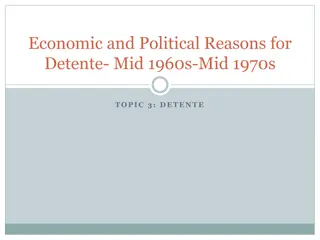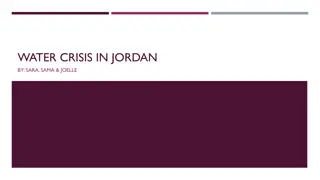Features and Consequences of Detente: A Comprehensive Overview
Detente, a period of reduced tension between global superpowers, saw the implementation of significant arms control agreements and treaties such as the Nuclear Test Ban Treaty, SALT, and the Helsinki Accord. These agreements aimed to limit nuclear proliferation and reduce the risk of nuclear conflict. However, detente came to an end in 1979 when the Soviet Union invaded Afghanistan, marking a shift in international relations.
Download Presentation

Please find below an Image/Link to download the presentation.
The content on the website is provided AS IS for your information and personal use only. It may not be sold, licensed, or shared on other websites without obtaining consent from the author.If you encounter any issues during the download, it is possible that the publisher has removed the file from their server.
You are allowed to download the files provided on this website for personal or commercial use, subject to the condition that they are used lawfully. All files are the property of their respective owners.
The content on the website is provided AS IS for your information and personal use only. It may not be sold, licensed, or shared on other websites without obtaining consent from the author.
E N D
Presentation Transcript
FEATURES AND CONSEQUENCES OF DETENTE Topic 3: Detente
Arms Limitations Nuclear Test Ban 1963 Non Proliferation 1968 SALT (Strategic Arms Limitation Treaty) 1969-1972 The Anti Ballistic Missile Treaty The Interim Treaty (expired in 1977) The Basic Principles Agreement 1972 The Helsinki Accord 1975
The initial treaties The Cuban Missile Crisis scared the superpowers and they sought to limit nuclear power The Nuclear Test Ban Treaty and the Non Proliferation (no growth/no more accumulation) Treaty came out of this crisis The crisis in Czechoslovakia in 1968 saw this limiting falter from the Soviet Union
SALT 1969-1972 The Anti Ballistic Missile Treaty reduced tension The treaty limited each country to TWO ABM sites, each side knew that if they attacked the other side COULD strike back. This was a deterrent to nuclear warfare. The Interim Treaty limited Intercontinental Ballistic missiles and Submarine Launched Ballistic Missiles. It ignored Multiple Independently Targeted Re-entry Vehicles. This situation benefited the US.
SALT The Basic Principles Agreement, 1972, laid down the conduct for nuclear war It called for: peaceful co-existence, the avoidance of military confrontations and no claims of spheres of influence The Seabed Treaty, 1971, banned the placing of warheads on the seabed
SALT During the SALT period, Nixon visited Moscow in 1972 and 1974; Brezhnev visited Washington in 1973 Trade was also encouraged
The Helsinki Accord 1975 All European countries, the US and Canada participated in a conference to recognise the existing borders as set at the end of World War II.
The end of detente In 1979, the Soviet Union invaded Afghanistan and the period of detente was over.
